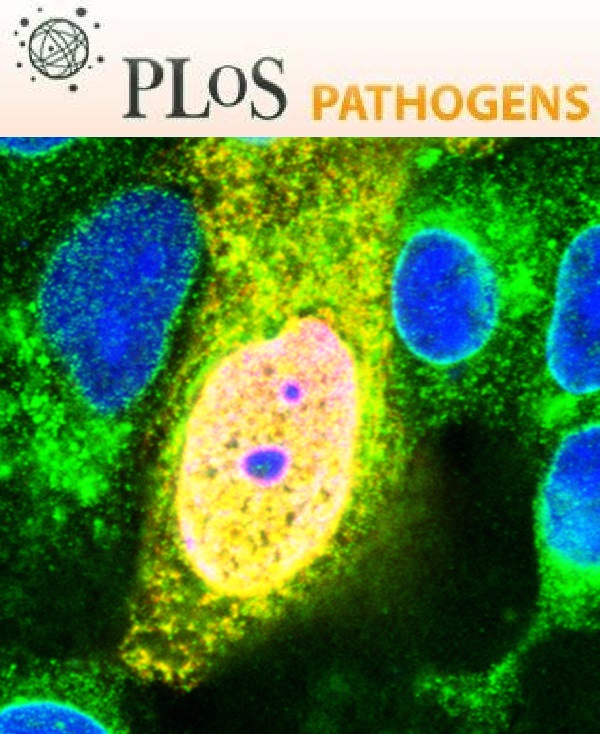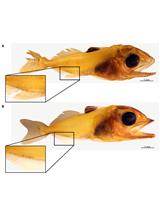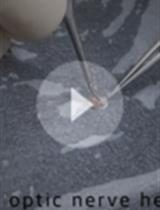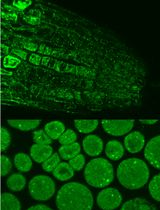- EN - English
- CN - 中文
Immunocytochemical Detection of Recombinant Biomphalysin on Schistosoma mansoni Sporocysts
免疫细胞化学法检测曼氏血吸虫孢囊中的重组毒素
发布: 2013年11月20日第3卷第22期 DOI: 10.21769/BioProtoc.969 浏览次数: 8928
评审: Fanglian He
Abstract
Schistosomiasis, or bilharzia, is a tropical disease caused by worms of the genus Schistosoma which infect about 200 million people. The life cycle of the parasite requires Biomphalaria, a specific genus of freshwater snails, as intermediate. Using an interactome approach employing B. glabrata plasma and S. mansoni primary sporocyst extracts, we identified a new cytolytic protein called Biomphalysin that displays similarities to members of the β-PFT superfamily known to form channels in targeted membranes. To investigate its mechanism of action, we produced a recombinant protein flanked by an N-terminal 6 histidine tag. Then, we investigated the ability of Biomphalysin to interact with the sporocyst tegument. This optimized protocol describes an immunocytochemical procedure to detect histidine tagged recombinant protein on the sporocyst tegumental membrane.
Keywords: Interaction host/parasite (交互主机/寄生虫)Background
Materials and Reagents
- Paraformaldehyde (PAF) (Sigma-Aldrich, catalog number: 158127 )
- PBS (Sigma-Aldrich, catalog number: P4417 )
- BSA (Sigma-Aldrich, catalog number: A3803 )
- poly-D-Lysine–coated slides (culture slides) (BD Biosciences, Falcon®, catalog number: 354632 )
- Mouse anti-HisG monoclonal antibody (Life Technologies, catalog number: R940-25 )
- Alexa Fluor 594 goat anti-mouse IgG (Life Technologies, catalog number: A 110005 )
- Dako fluorescent mounting medium (Dako, catalog number: S3023 )
- Primary sporocysts of S. mansoni (Brazilian strain) used for immunocytochemical experiments were obtained by transferring miracidia to Chernin’s balanced salt solution (CBSS) and maintaining at 26 °C under normoxic conditions for 24 h (Yoshino and Laursen, 1995). Then, 100 primary sporocysts were incubated for 1 h with 30 nM of recombinant Biomphalysin protein (Galinier et al., 2013). As negative control, 100 sporocysts were used without having been treated with recombinant biomphalysin.
- N terminal His(6)-tagged biomphalysin was expressed in vitro using the Rapid Translation System (RTS 500 Wheat Germ CECF Kit) (5 PRIME, catalog number. 2402500 )
- 4% PAF (see Recipes)
- PBS/3% BSA (see Recipes)
- PBS/1% BSA (see Recipes)
- Anti- HisG antibody 1:500 (see Recipes)
- Anti-mouse IgG 1:1,000 (see Recipes)
Equipment
- Coverslip 24 x 60 mm (VWR International, catalog number: 631-1575 )
- BD BioCoatTM Poly-D-Lysine 8-well CultureSlides (Becton, Dickinson and Company, catalog number: 354632)
- Eppendorf centrifuge (Eppendorf , model: 5810R )
- Swinging agitator (Fisher scientific, model: 10758995 )
- Fluorescence confocal laser-scanning microscope (ZEISS, model: LSM 700 )
Procedure
文章信息
版权信息
© 2013 The Authors; exclusive licensee Bio-protocol LLC.
如何引用
Readers should cite both the Bio-protocol article and the original research article where this protocol was used:
- Duval, D., Galinier, R., Portela, J., Mitta, G. and Gourbal, B. (2013). Immunocytochemical Detection of Recombinant Biomphalysin on Schistosoma mansoni Sporocysts. Bio-protocol 3(22): e969. DOI: 10.21769/BioProtoc.969.
- Galinier, R., Portela, J., Mone, Y., Allienne, J. F., Henri, H., Delbecq, S., Mitta, G., Gourbal, B. and Duval, D. (2013). Biomphalysin, a new beta pore-forming toxin involved in Biomphalaria glabrata immune defense against Schistosoma mansoni. PLoS Pathog 9(3): e1003216.
分类
免疫学 > 免疫细胞染色 > 免疫检测
生物化学 > 蛋白质 > 免疫检测 > 免疫染色法
您对这篇实验方法有问题吗?
在此处发布您的问题,我们将邀请本文作者来回答。同时,我们会将您的问题发布到Bio-protocol Exchange,以便寻求社区成员的帮助。
提问指南
+ 问题描述
写下详细的问题描述,包括所有有助于他人回答您问题的信息(例如实验过程、条件和相关图像等)。
Share
Bluesky
X
Copy link













